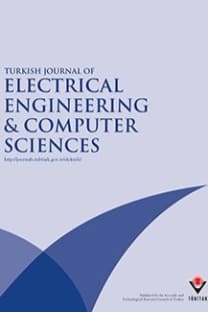Design of information retrieval experiments: the sufficient topic set size for providing an adequate level of confidence
Information retrieval system evaluation, topic set size, central limit theorem, generalizability theory
Design of information retrieval experiments: the sufficient topic set size for providing an adequate level of confidence
Information retrieval system evaluation, topic set size, central limit theorem, generalizability theory,
___
- C.W. Cleverdon, “The significance of the Cranfield tests on index languages”, Proceedings of the 14th International ACM SIGIR Conference on Research and Development in Information Retrieval (reprint), pp. 3–12, 1991.
- W.G. Cochran, Sampling Techniques, New York, Wiley, 1977.
- R.V. Hogg, A.T. Craig, J.W. McKean, Introduction to Mathematical Statistics, New York, Prentice Hall, 2004.
- K. Sparck Jones, “Automatic indexing”, Journal of Documentation, Vol. 30, pp. 393–432, 1974.
- C. Buckley, E.M. Voorhees, “Evaluating evaluation measure stability”, Proceedings of the 23rd International ACM SIGIR Conference on Research and Development in Information Retrieval, pp. 33–40, 2000.
- E.M. Voorhees, C. Buckley, “The effect of topic set size on retrieval experiment error”, Proceedings of the 25th International ACM SIGIR Conference on Research and Development in Information Retrieval, pp. 316–323, 2002. W. Webber, A. Moffat, J. Zobel, “Statistical power in retrieval experimentation”, Proceeding of the 17th ACM conference on Information and Knowledge Management, pp. 571–580, 2008.
- E.M. Voorhees, “Variations in relevance judgments and the measurement of retrieval effectiveness”, Proceedings of the 21st International ACM SIGIR Conference on Research and Development in Information Retrieval, pp. 315–323, 19 E.M. Voorhees, “Topic set size redux”, Proceedings of the 32nd International ACM SIGIR Conference on Research and Development in Information Retrieval, pp. 806–807, 2009.
- R.A. Fisher, The Design of Experiments, Edinburgh, Oliver & Boyd, 1935.
- W. Lin, A. Hauptmann, “Revisiting the effect of topic set size on retrieval error”, Proceedings of the 28th International ACM SIGIR Conference on Research and Development in Information Retrieval, pp. 637–638, 2005. D. Bodoff, P. Li, “Test theory for assessing IR test collections”, Proceedings of the 30th International ACM SIGIR Conference on Research and Development in Information Retrieval, pp. 367–374, 2007.
- ISSN: 1300-0632
- Yayın Aralığı: Yılda 6 Sayı
- Yayıncı: TÜBİTAK
Jinping LIU, Weihua GUI, Zhaohui TANG
Compact microstrip antenna with metamaterial for wideband applications
Han XIONG, Jing-song HONG, Ming-tao TAN, Bing LI
Hybrid SPR algorithm to select predictive genes for effectual cancer classification
Aruna SUNDARAM, Nandakishore Lellapalli VENKATA, Rajagopalan Sarukai PARTHASARATHY
Control of diesel engines mounted on vehicles in mobile cranes via CAN bus
Hasan Nasiri SOLOKLO, Malihe Maghfoori FARSANGI
XOR-based artificial bee colony algorithm for binary optimization
Mustafa Servet KIRAN, Mesut GÜNDÜZ
Aida Fazliana Abdul KADIR, Azah MOHAMED, Hussain SHAREEF, Mohd Zamri Che WANIK
A flexible rule-based framework for pilot performance analysis in air combat simulation systems
Stopping spam with sending session verification
A low-voltage and low-power sinh-domain universal biquadratic filter for low-frequency applications
